There are 41 types of scorpions that have been observed in California. Some are spotted more often than others, while some still remain a mystery, with very few observations over the years.
Continue reading to find out about the 41 scorpions you may come across when in California.
Are California scorpions Dangerous?
Scorpions have a bad reputation, thanks to their curved tails, which can give quite a sting.
Only one species in the United States needs to be known for its strong venom, which can harm a human.
That is the Arizona bark scorpion, which has the most venomous sting and can be found in southeastern California.
Scorpions In California
The 41 scorpions you may come across in California, include:
1. Uroctonus mordax

Scientific name: Uroctonus mordax.
Common name: Western forest scorpion, California forest scorpion.
The western forest scorpion is a member of the Vaejovidae family, which has seventeen genera.
These scorpions can be found throughout California, with most observations made in April.
2. Paruroctonus silvestrii

Scientific name: Paruroctonus silvestrii.
Common name: California common scorpion.
This scorpion is often seen throughout California and is adaptive to a host of habitats. They can live comfortably in the desert or near the coast.
They are light tan to yellow in color with a body held close to the ground.
They are nocturnal and mostly active at night, hiding under rocks and other objects during the day.
They grow very slowly and can live for more than ten years.
3. Paravaejovis puritanus
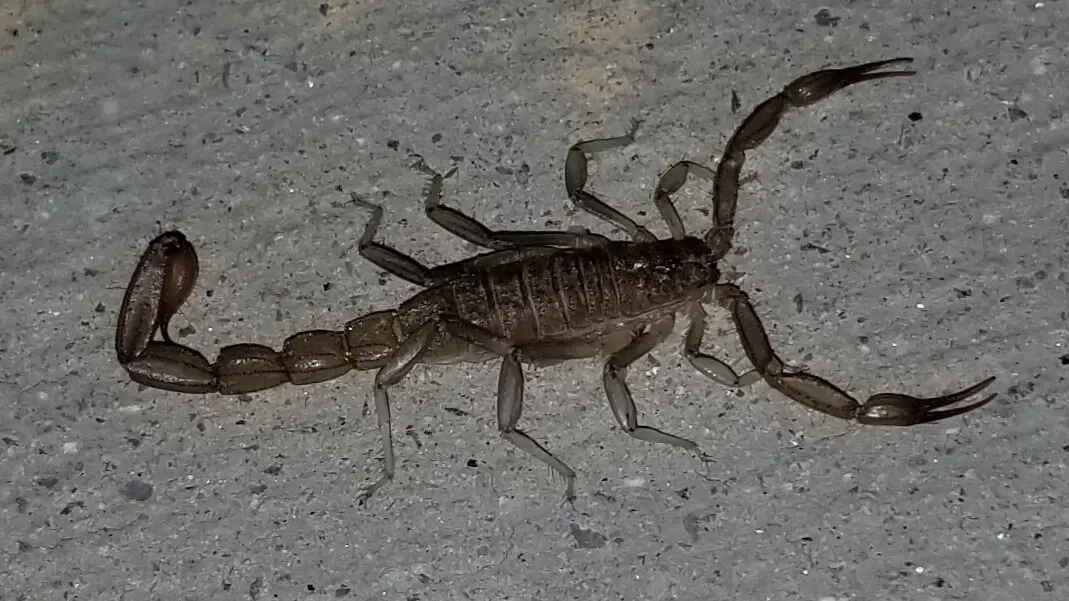
This scorpion belongs to the Vaejovidae scorpion family with eleven species.
There are not many observations of this scorpion, who tends to be on the shy side, hiding during the day and hunting at night.
4. Anuroctonus pococki
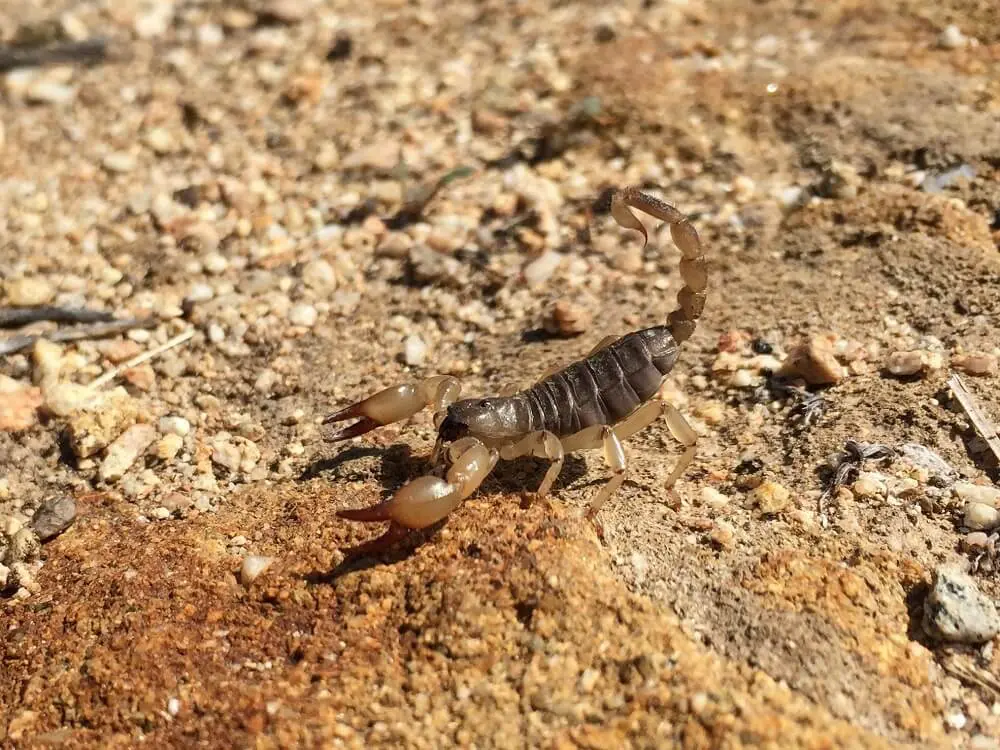
Scientific name: Anuroctonus pococki.
Common name: California swollenstinger scorpion.
These dark brown scorpions are not easy to spot at night. They tend to hide during the day, which means unless you lift up debris or a rock, you are not likely to encounter them.
Females tend to be larger than males with brown legs, tails, and arms.
The last tail segment is slightly lighter than the body with a swollen bulge that can be seen right before the stinger.
Their stings can be painful and cause redness or swelling, but they are not dangerous to humans.
5. Smeringurus mesaensis

Scientific name: Smeringurus mesaensis.
Common name: Dune scorpion.
The dune scorpion is from the Vaejovidae family and found in the desert areas of California.
They grow to around 7.2cm in length with females being larger than the male.
6. Hadrurus arizonensis
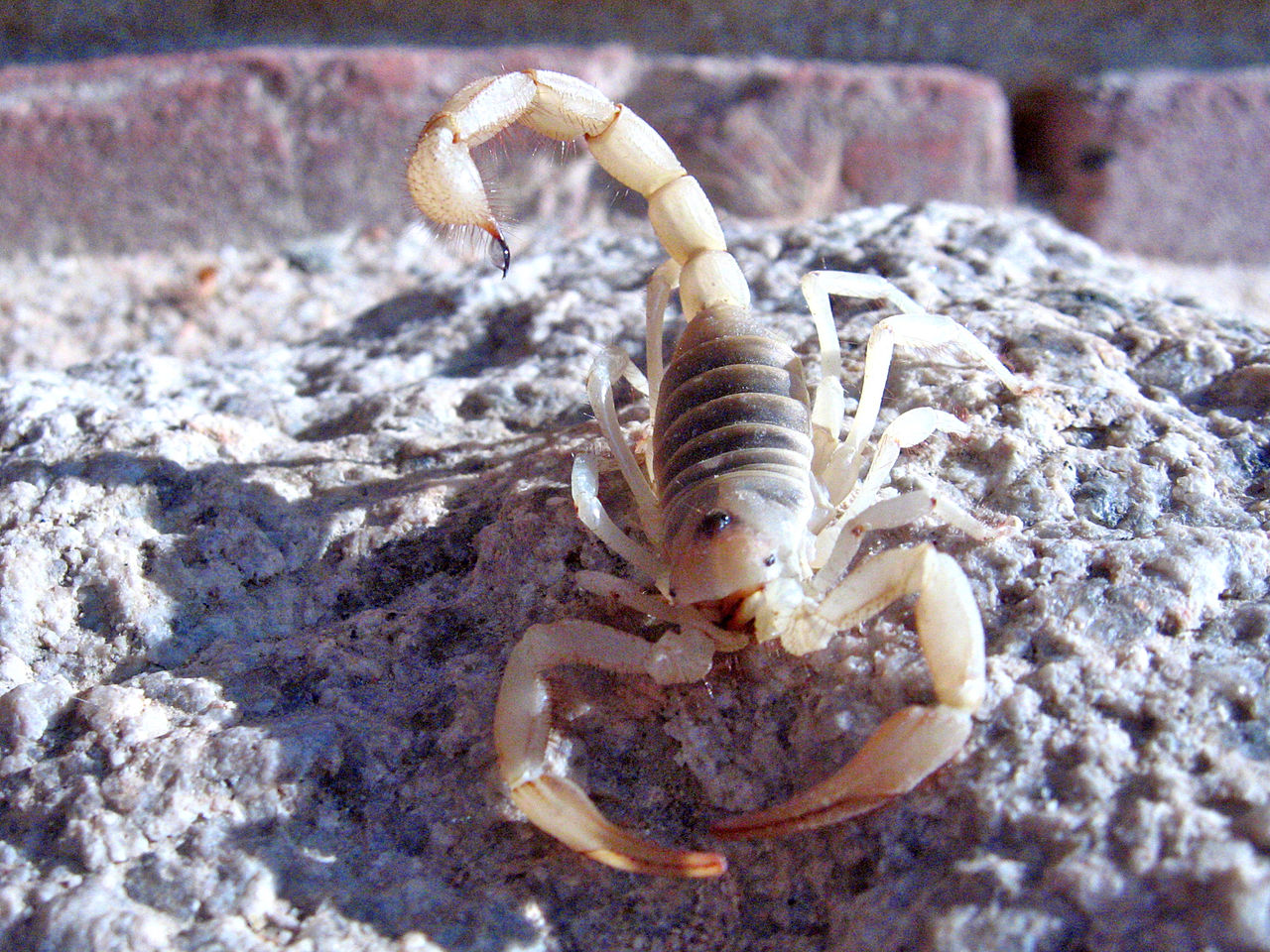
Scientific name: Hadrurus arizonensis.
Common name: giant desert hairy scorpion, giant hairy scorpion, Arizona Desert hairy scorpion.
This is a giant desert hairy scorpion and is considered the largest scorpion in North America, which can grow to up to 5.5 inches (14cm). Due to their large size, they feed o other scorpions, lizards, and snakes.
They are yellow with a dark top and crab-like pincers. They have brown hairs that cover the body.
These scorpions are common in southern California where they have adapted to dry and hot conditions. They are often found in low elevated valleys in burrows, where they hide during the day, coming out at night to hunt.
Even with their exceptionally large size, these scorpions are not potent and a sting is similar to that of a bee.
7. Serradigitus gertschi

Scientific name: Serradigitus gertschi.
Common name: Sawfinger scorpion.
The sawfinger scorpion belongs to the Vaejovidae family with more than twenty species described.
These scorpions are common in the southwestern parts of California, growing up to three quarters of an inch.
Even with their small size, they are exceptionally aggressive, but their venom is not potent and should only cause mild irritation, similar to that of a honeybee sting.
8. Paravaejovis waeringi
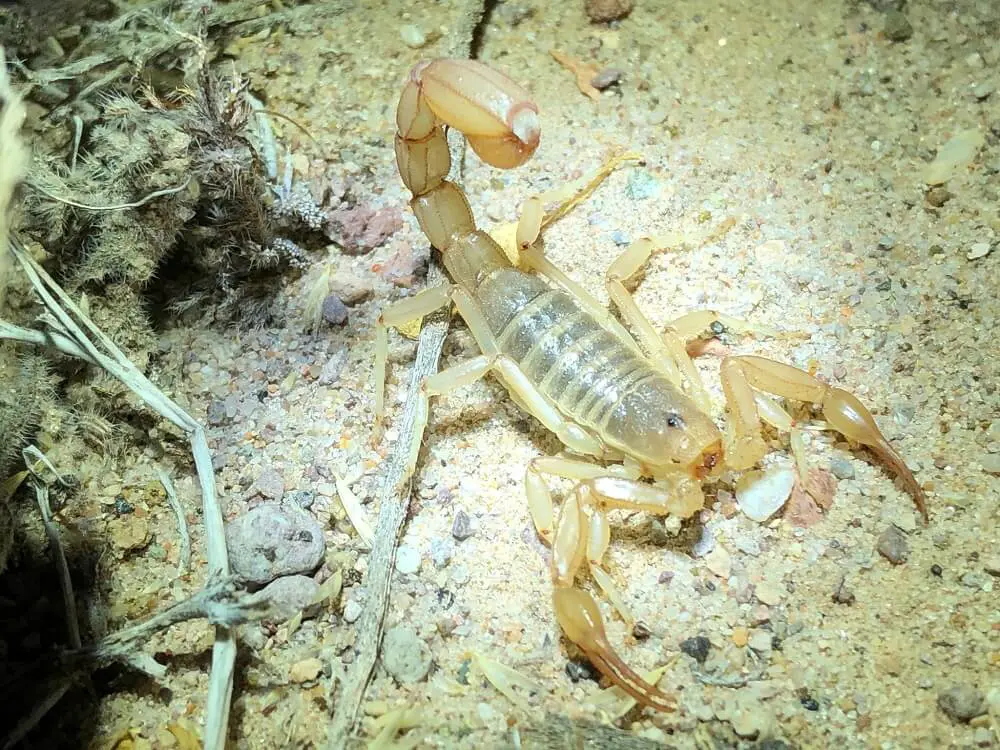
Scientific name: Paravaejovis waeringi.
Common name: Dune devil scorpion.
The dune devil scorpion is another of the beautiful scorpions you may encounter in the dry and desert areas of California. They have been observed in San Diego.
These are highly aggressive scorpions, but their venom is not potent.
9. Superstitionia donensis

Scientific name: Superstitionia donensis.
Common name: Superstition mountains scorpion.
This is the only species in the Superstitionidae family, which was discovered in 1940 in Arizona.
These scorpions are found in southern California. The name refers to the superstition Mountains, where it was first discovered. They prefer mountainous terrain, hiding under rocks or in the desert, hiding near plants.
They are dark brown to tan in color with spots and a shiny appearance, growing up to 3cm in length.
While its venom is different from other well-known scorpions, its venom is not more venomous, which means that a sting will cause redness and swelling for up to 48 hours.
10. Smeringurus vachoni
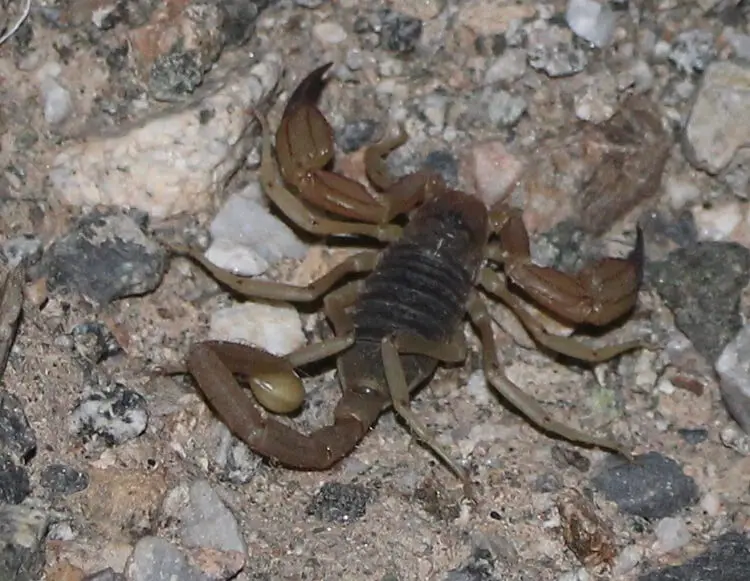
These are small scorpions which are native to the southwestern United States and Mexico. They are part of the Vaejovidae family.
They are robust scorpions, popular with beginner scorpion hobbyists.
They dig burrows or hide between rocks. They are relatively active and do co-habitate without fighting.
11. Graemeloweus iviei
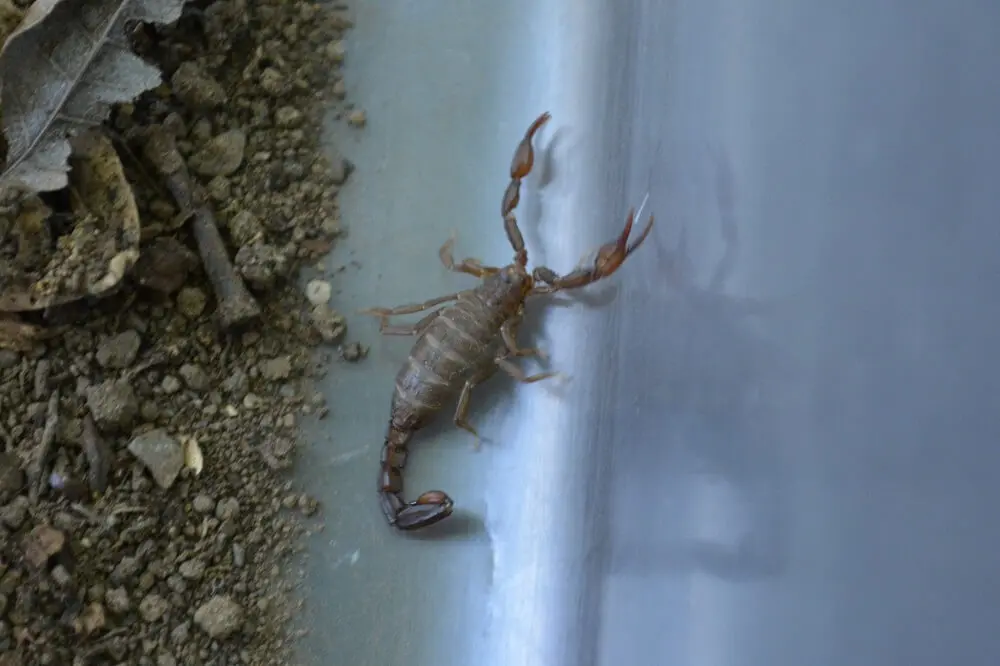
This is one of the many scorpions you can spot in California, but if you do, you are one of only a few.
This scorpion keeps itself very well hidden during the day, coming out of its burrow at night to hunt. They can be found under rotting branches or bark in oak woodlands in California.
12. Paruroctonus boreus

Scientific name: Paruroctonus boreus.
Common name: Northern scorpion.
The Northern Scorpion is a very hardy scorpion that can withstand just about any temperature. They have dark stripes on their bodies with eight legs and pincers.
Their stinger does contain venom, but it is not fatal to humans, rather more irritating.
They live in a range of habitats and are often spotted roaming on the ground hunting for food.
13. Paravaejovis confusus
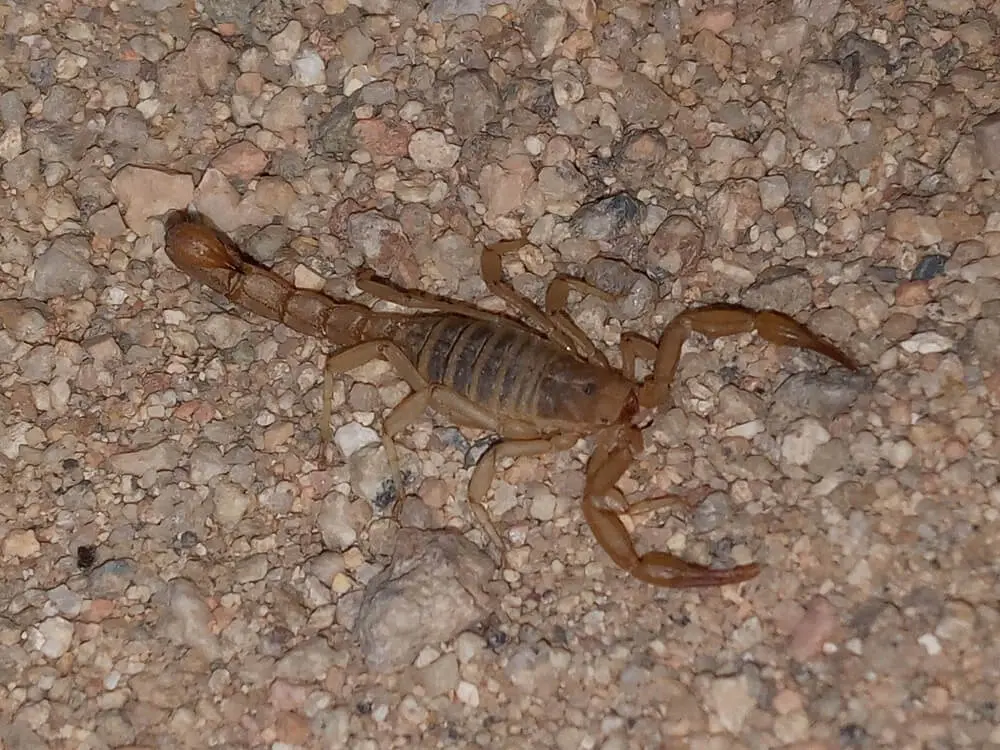
Scientific name: Paravaejovis confusus.
Common name: Yellow devil scorpion.
This is a small scorpion which has been spotted in the dry regions of California. Observations of this species increase during June and September.
14. Kovarikia williamsi
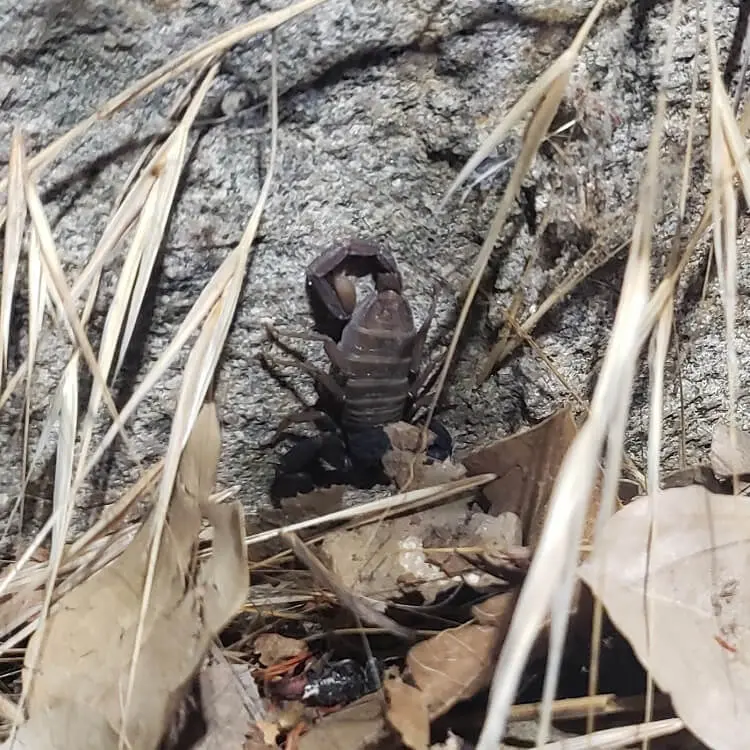
This scorpion belongs to the Scorpionidae family, which prefers rocky and humid habitats in southern California. This is one of three species which have been identified.
15. Uroctonites montereus
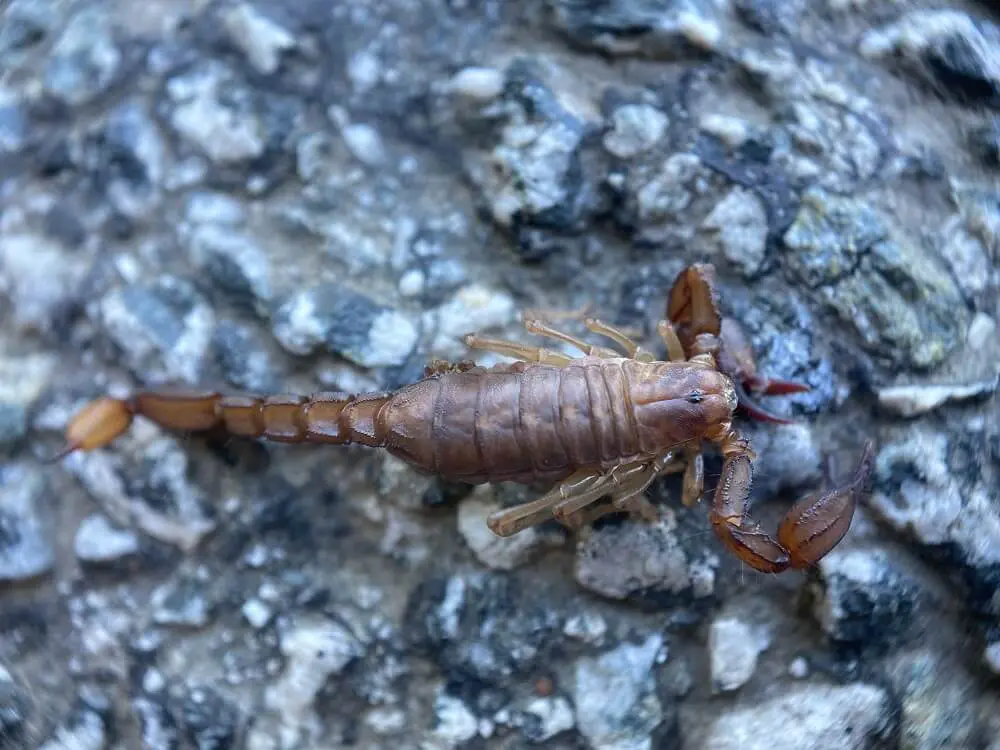
This scorpion is endemic to California, with adults growing to 3cm. They were first described in 1972.
16. Hadrurus anzaborrego
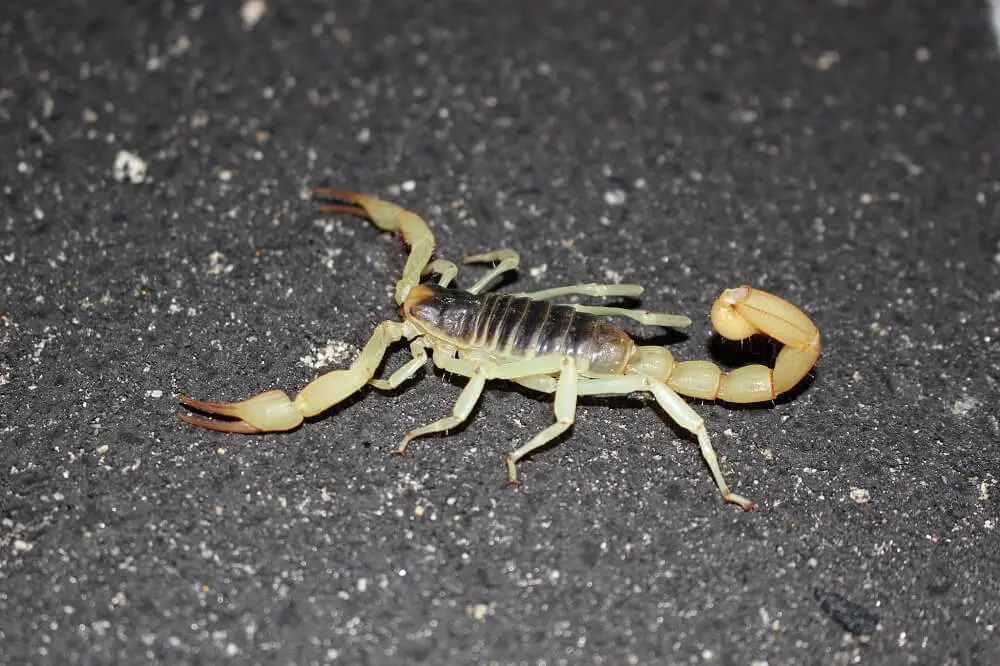
Scientific name: Hadrurus anzaborrego.
Common name: Anza-Borrego hairy scorpion.
The Anza-Borrego hairy scorpion can grow up to 1.1cm.
It is a small scorpion with a V-shaped interocular triangle and is known from Southern California where they can be spotted in the Anza-Borrego State Park and the Joshua Tree National Monument.
17. Paruroctonus becki
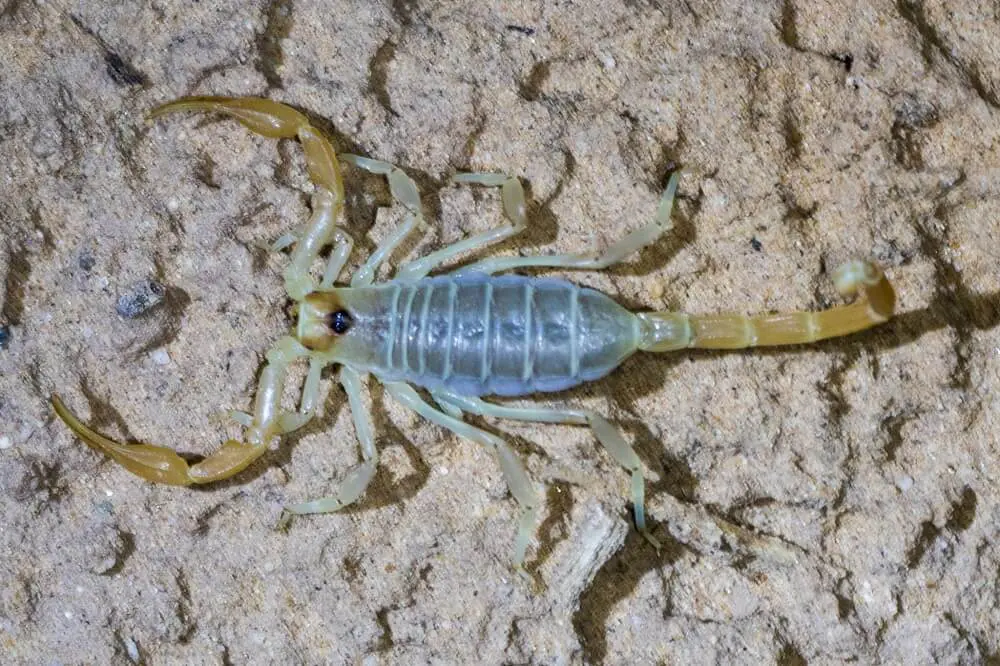
Scientific name: Paruroctonus becki.
Common name: Beck’s desert scorpion.
The Beck’s desert scorpion is another of the scorpions in California that prefer a hot and dry habitat where they can create burrows under the ground.
Their burrows provide them with shelter and privacy during the hot days, allowing them to come out at dusk and start hunting for their next meal.
18. Catalinia minima
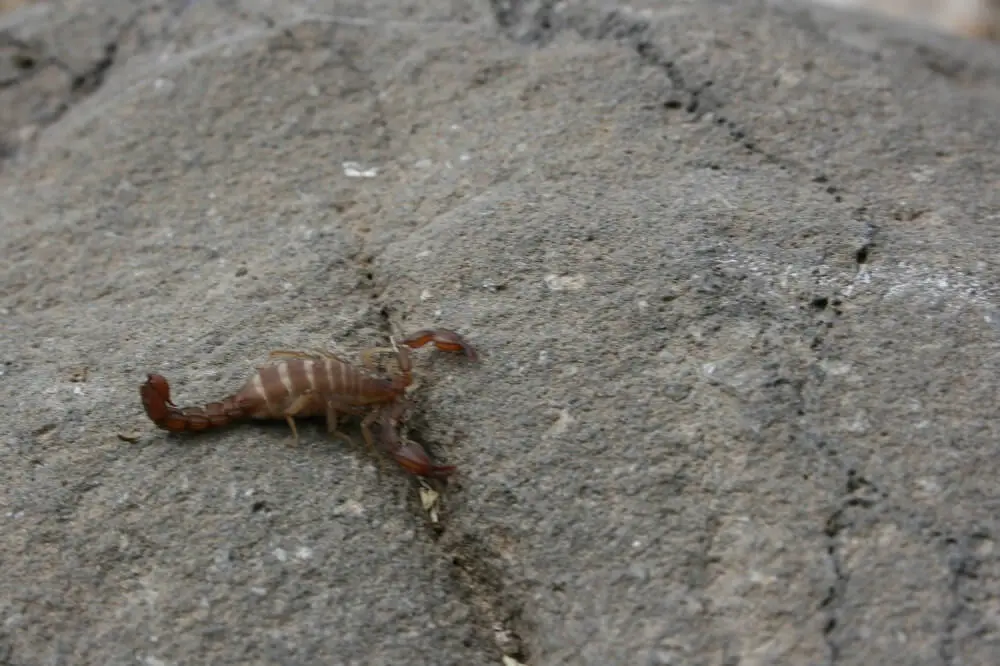
The Catalina minima can be found in California. where they live close to the coast, hiding under rocks and burrowing in sand for shelter.
There are not many observations of this species, as they tend to be secretive.
Should you be stung by accidentally disturbing one, it will only cause mild irritation, swelling, and redness for a couple of days.
19. Catalinia castanea
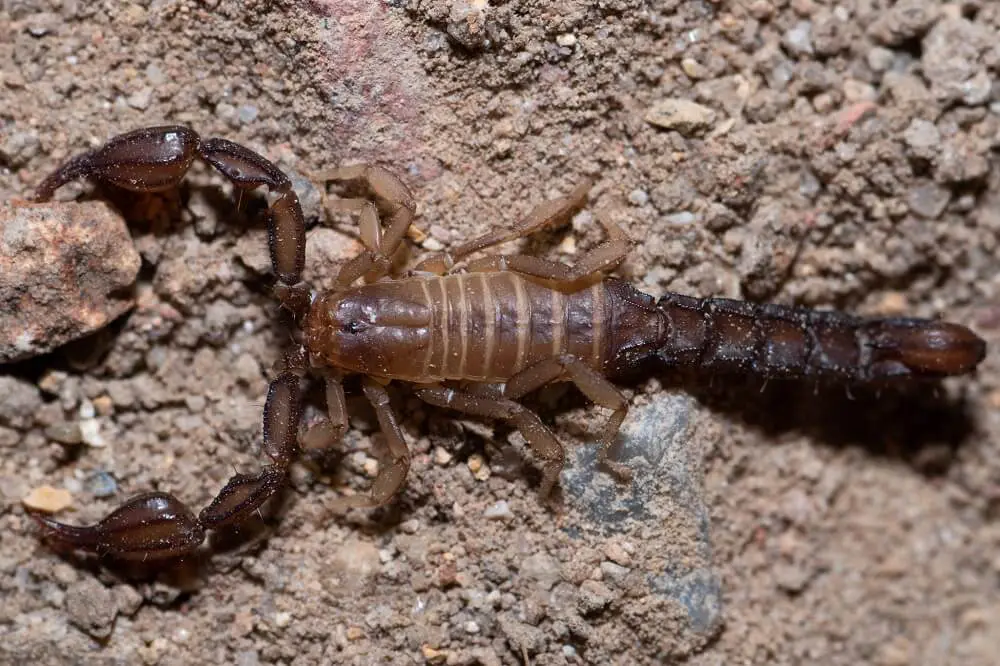
This species can be found in California where they spend their days hiding and coming out at night to hunt. There are not many observations of this scorpion to date.
Their venom is not deadly but rather causes irritation for a few days.
20. Stahnkeus subtilimanus
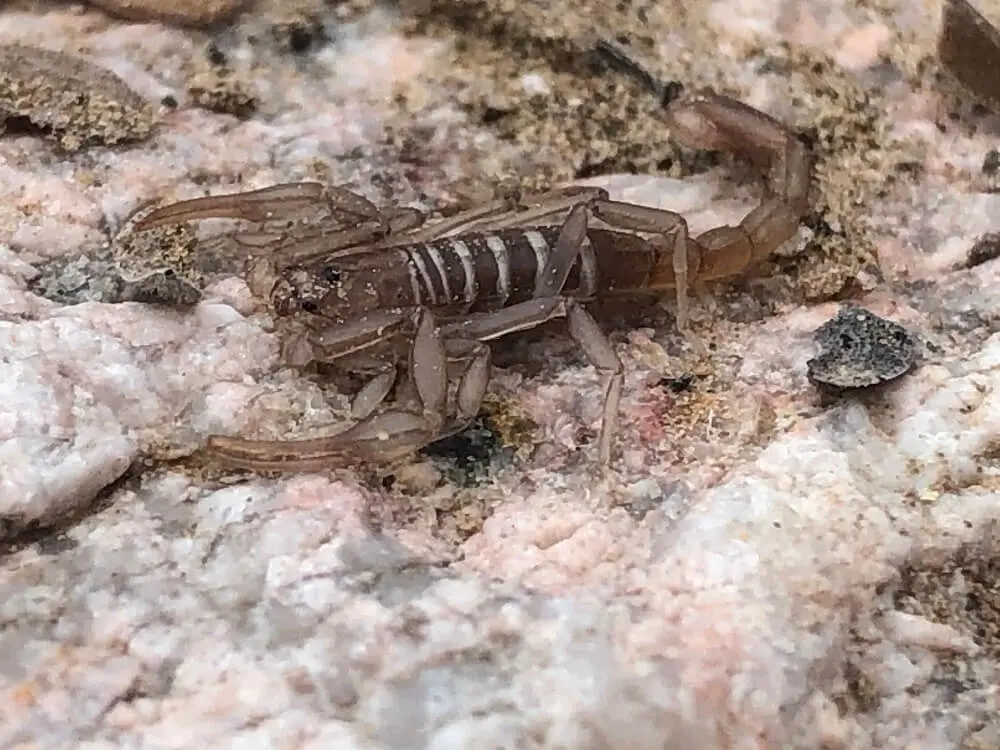
This species is found in southern California. Males can reach lengths of 3.5cm, with females being larger at 4.1cm.
They were first described in 1972 and are not often observed.
21. Catalinia thompsoni
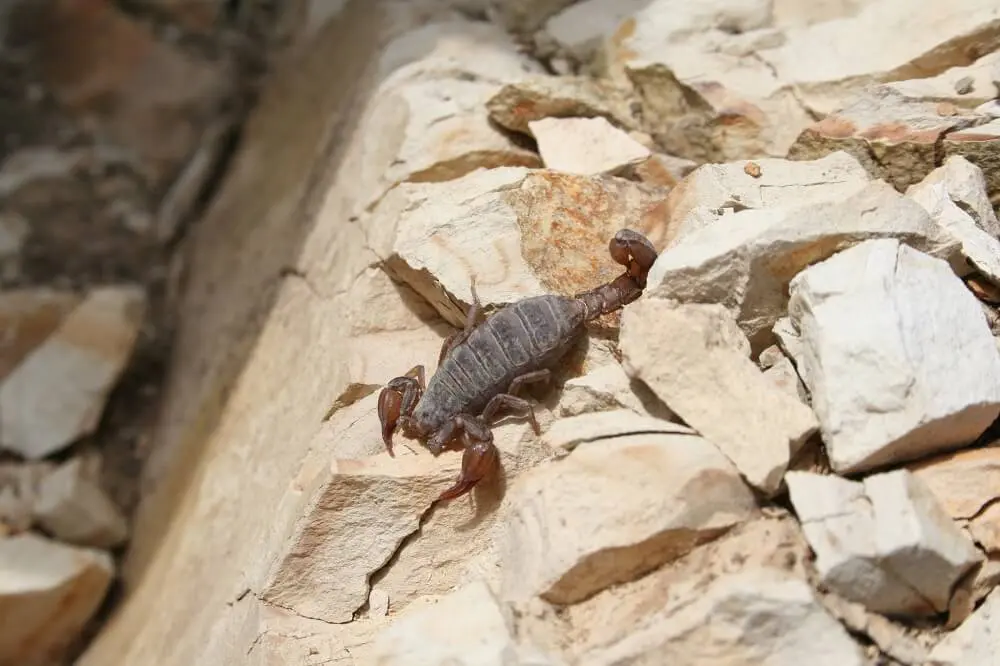
The Catalinia is a new scorpion genus from Southern California and part of the Vaejovidae family.
They can sometimes be spotted in the evenings, as the sun is setting and they come out for their next meal.
22. Catalinia andreas
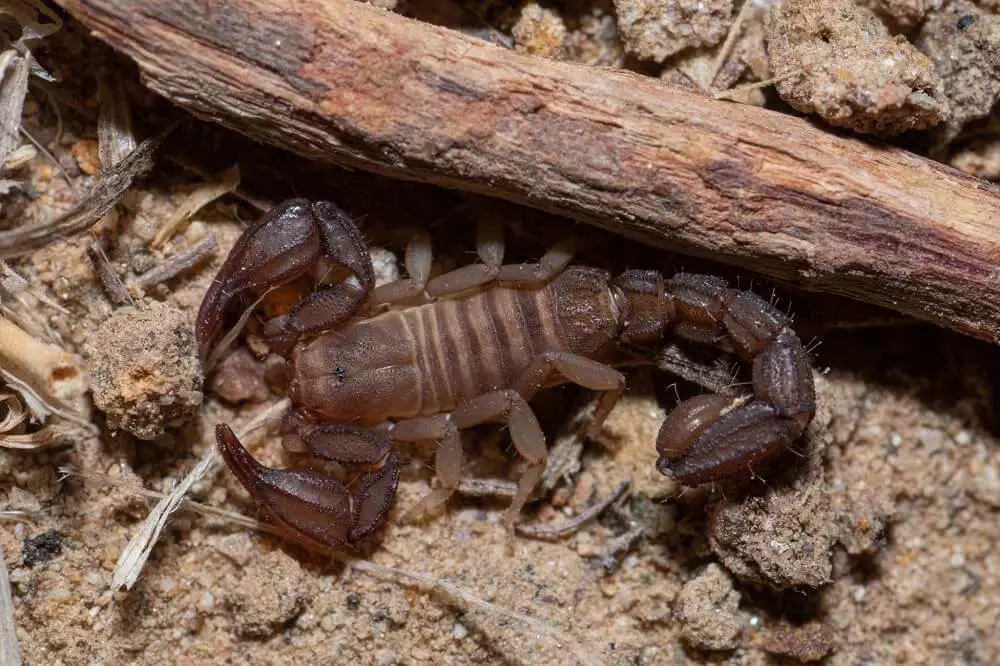
This new scorpion genus can be spotted in southern California and are part of the Vaejovidae family.
Not observed very often, as they are nocturnal, coming out at night to hunt.
23. Kovarikia oxy
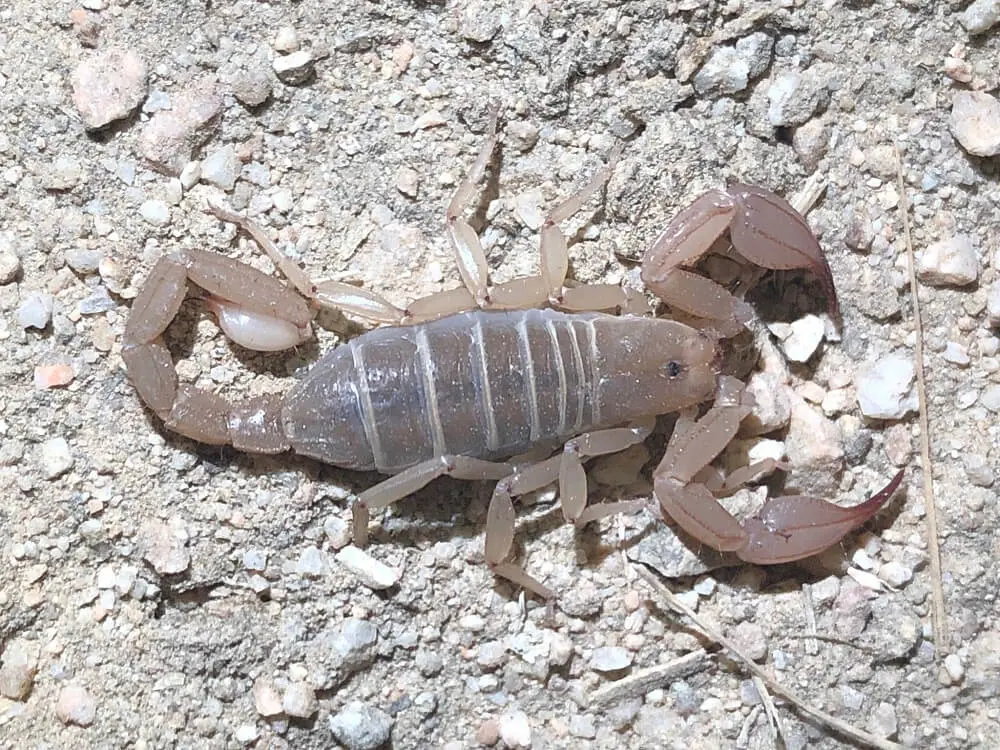
The Kovarikia oxy can be seen in the Angeles National Forest in Los Angeles County.
If disturbed or approached, they will take a defensive stance. These are aggressive species, but thankfully their venom is not dangerous to humans.
24. Serradigitus joshuaensis
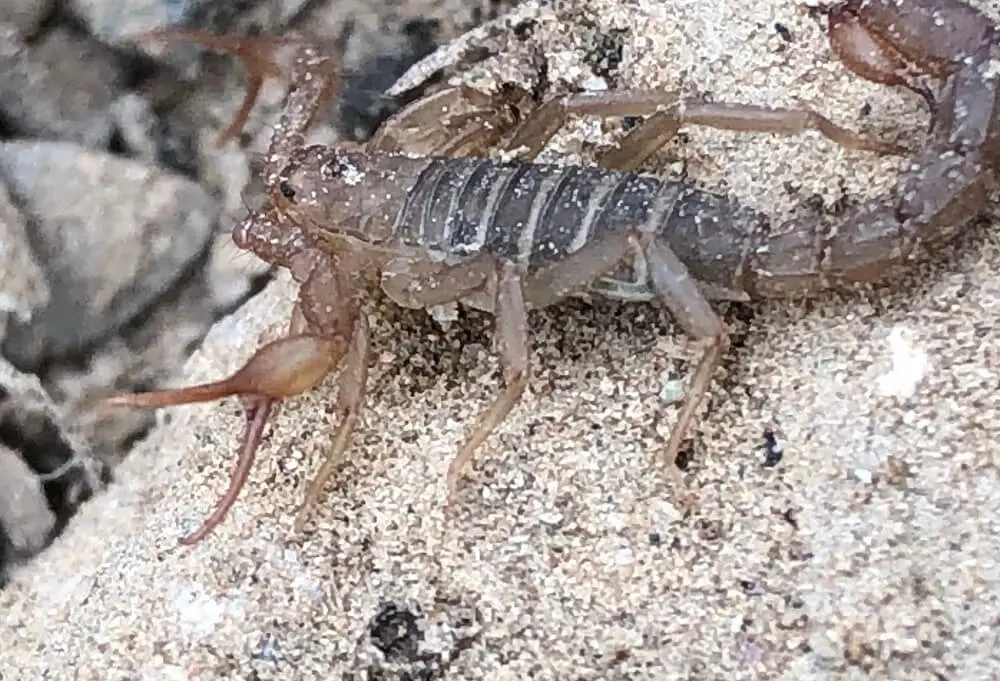
This sawfinger scorpion belongs to the Vaejovidae family with more than twenty species described.
There are not many observations of this scorpion, which can be spotted in California on the rare occasion.
25. Paruroctonus variabilis
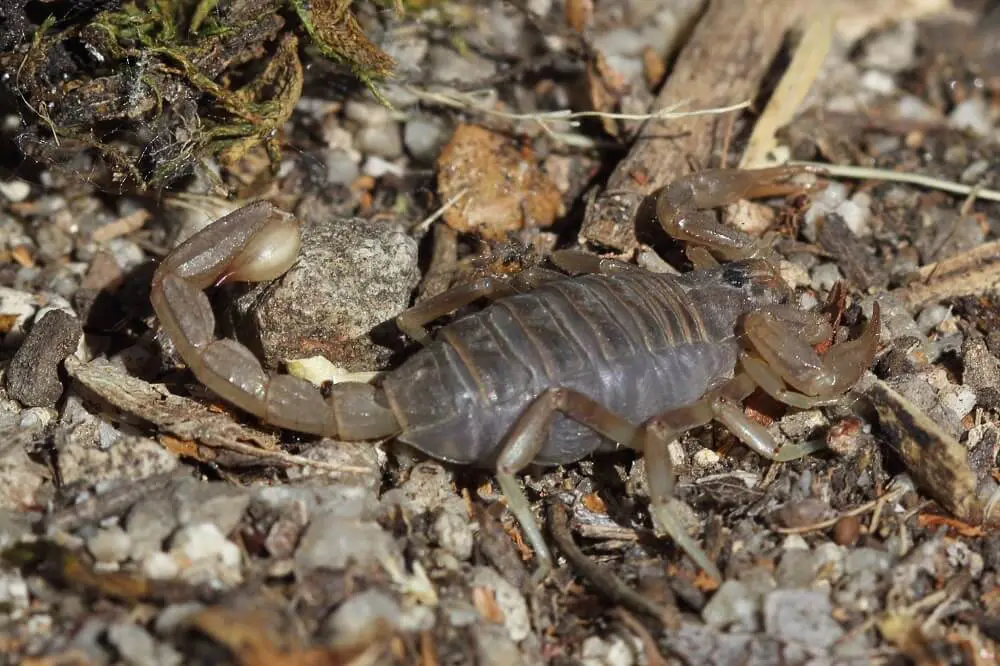
This scorpion also comes from the Vaejovidae family with eight described Paruroctonus species.
There are very few observations in California, as they are nocturnal and only spotted at night as they hunt on the ground, often not too far from their burrow or hiding place.
26. Hadrurus obscurus
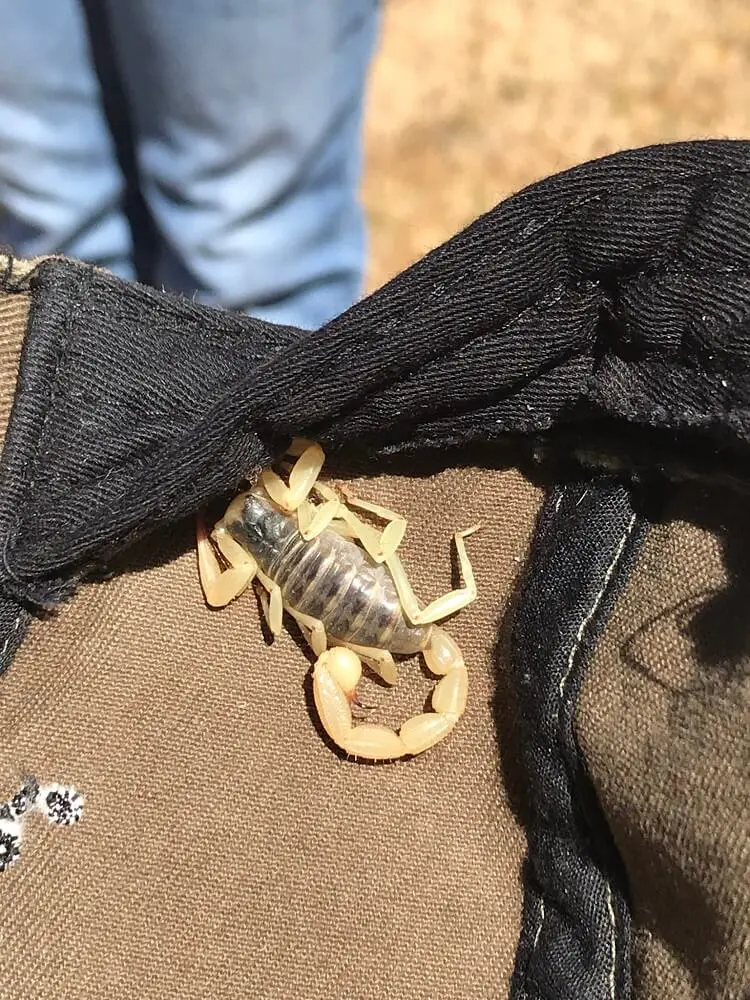
The hadrurus obscurus belongs to the Caraboctonidae family, often found in sandy deserts in the Southwestern United States.
They are one of the largest scorpions and can reach sizes of 15cm with yellow tones.
They have a painful sting but will try and pinch you before they sting.
They are very active at night and tend to burrow themselves into loose soil, but not completely. Females also guard their young until their first molt.
27. Kovarikia angelena
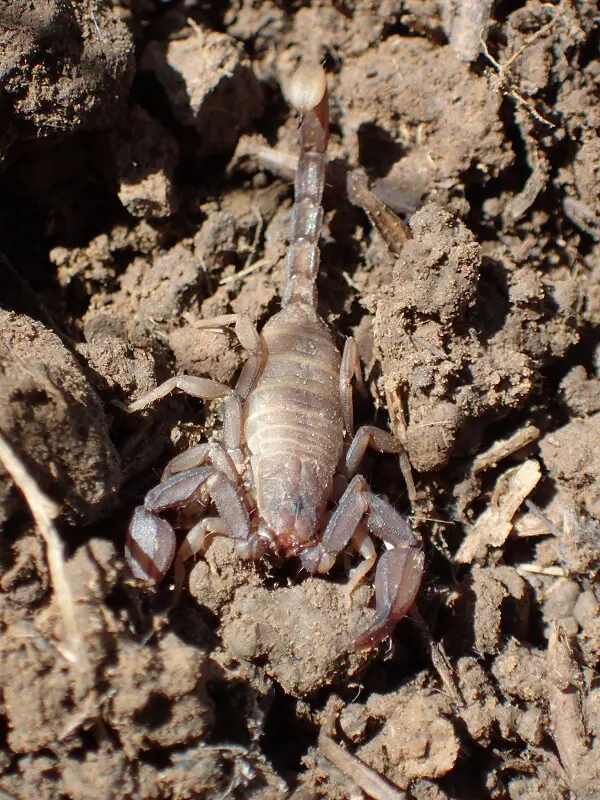
This scorpion belongs to the Scorpionidae family, which prefer humid rocky area and can be observed in Southern California. This is one of three species identified.
28. Kochius hirsuticauda
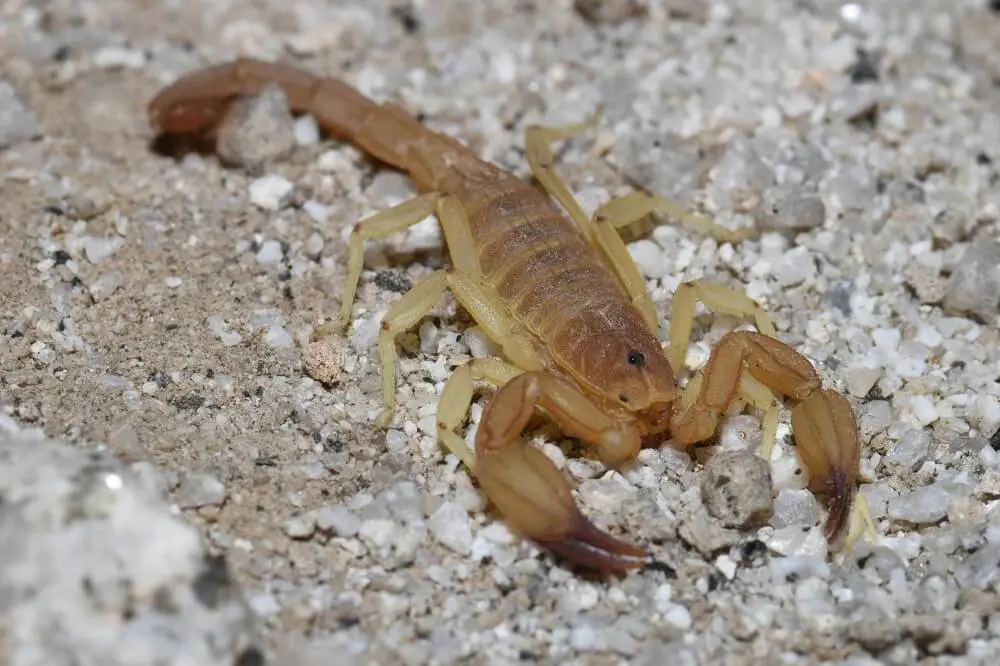
The Kochius hirsuticaude belongs to the Vaejovidae family and is relatively common in California.
They grow up to 3.2cm and are best observed at night when hunting for prey.
29. Paruroctonus maritimus
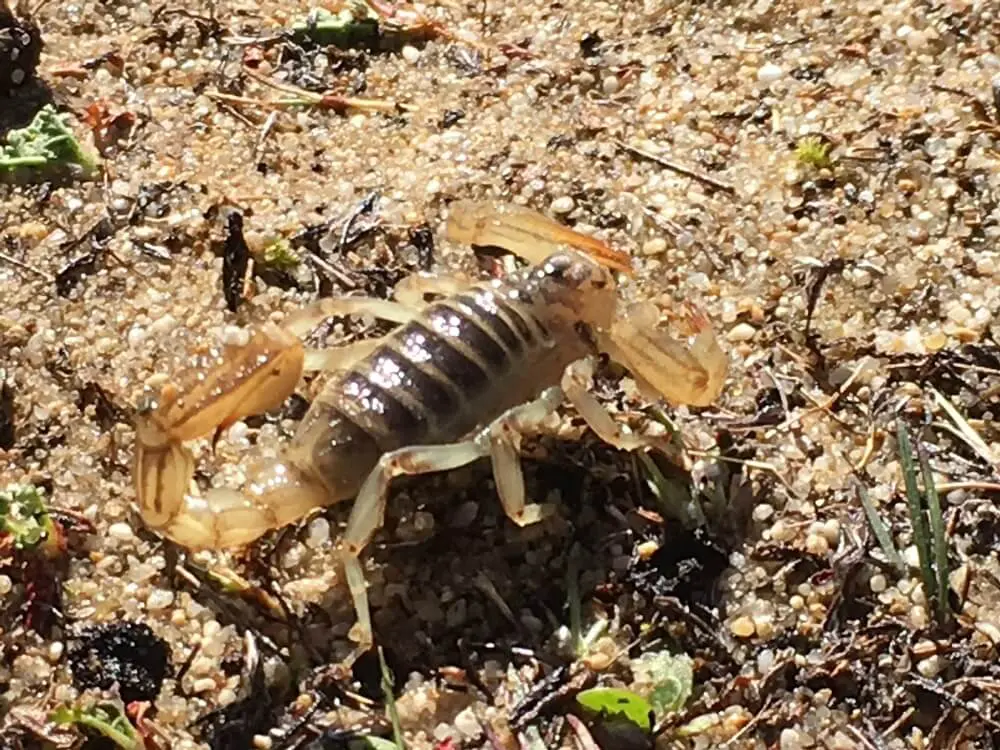
Scientific name: Paruroctonus maritimus.
Common name: Monterey dunes scorpion.
The monterey dunes scorpion is considered an endangered species, due to its limited distribution.
It can be found in the coastal dunes of Northern Monterey County and not anywhere else. One was even found under the debris which was left from Fort Ord.
30. Hadrurus spadix

Scientific name: Hadrurus spadix.
Common name: Black hairy scorpion.
The black hairy scorpion is a large scorpion that is native to the southern desert regions of North America, including California.
These burrowing scorpions can grow up to 5.5 inches (15cm). They spend most of their time improving their burrows.
They are also referred to as the black back scorpion.
It is a nervous scorpion, though it will display aggression if disturbed.
They have a low toxicity venom but don’t be fooled, the sting can be exceptionally painful.
31. Paruroctonus xanthus
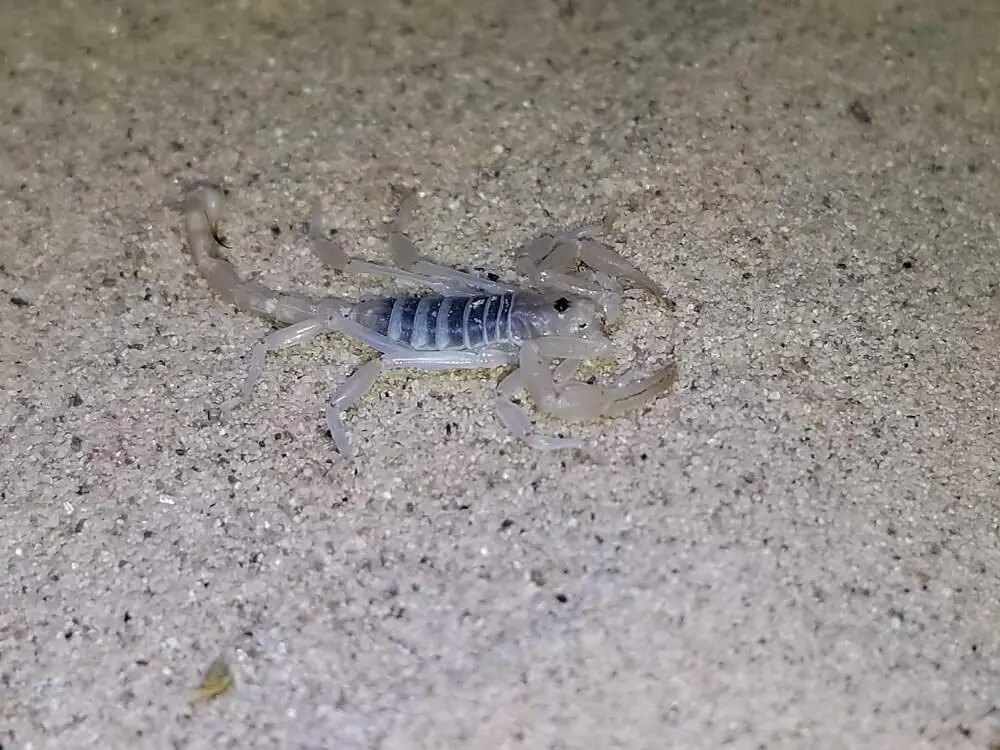
This scorpion is a nervous and shy scorpion that hides in its burrow during the day. The majority of observations have been noted in May and August.
32. Paruroctonus arenicola
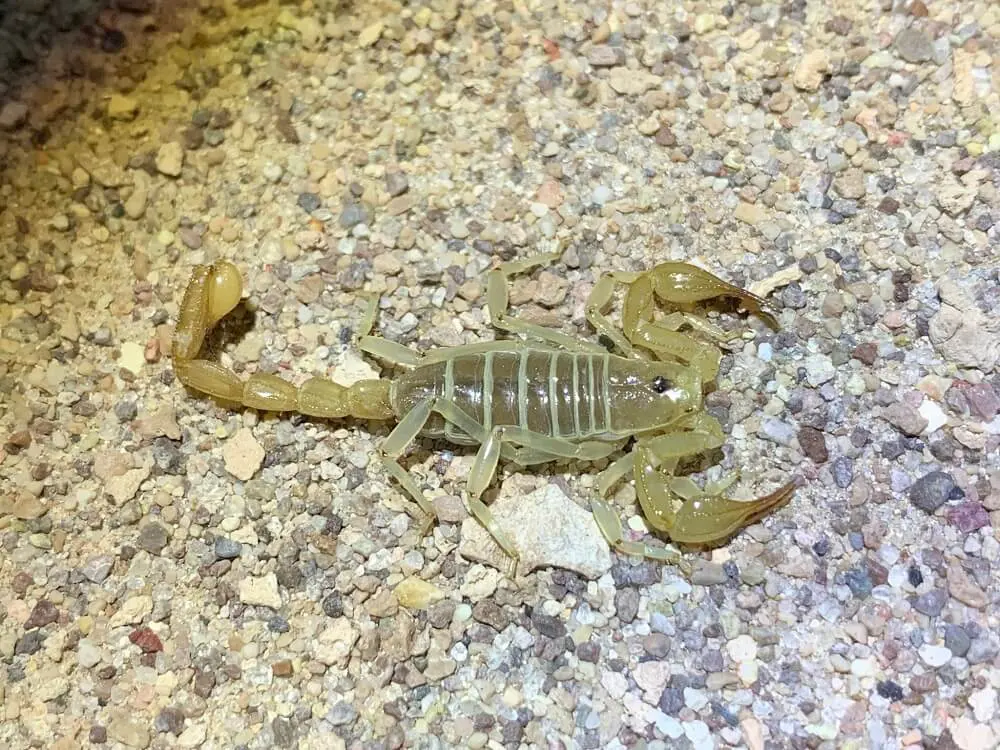
This scorpion is endemic to the United States and can be found in the San Bernardino County in California with females being ever so slightly larger than the male.
Females grow to around 4.8cm, with males growing to 4.7cm.
33. Anuroctonus phaiodactylus
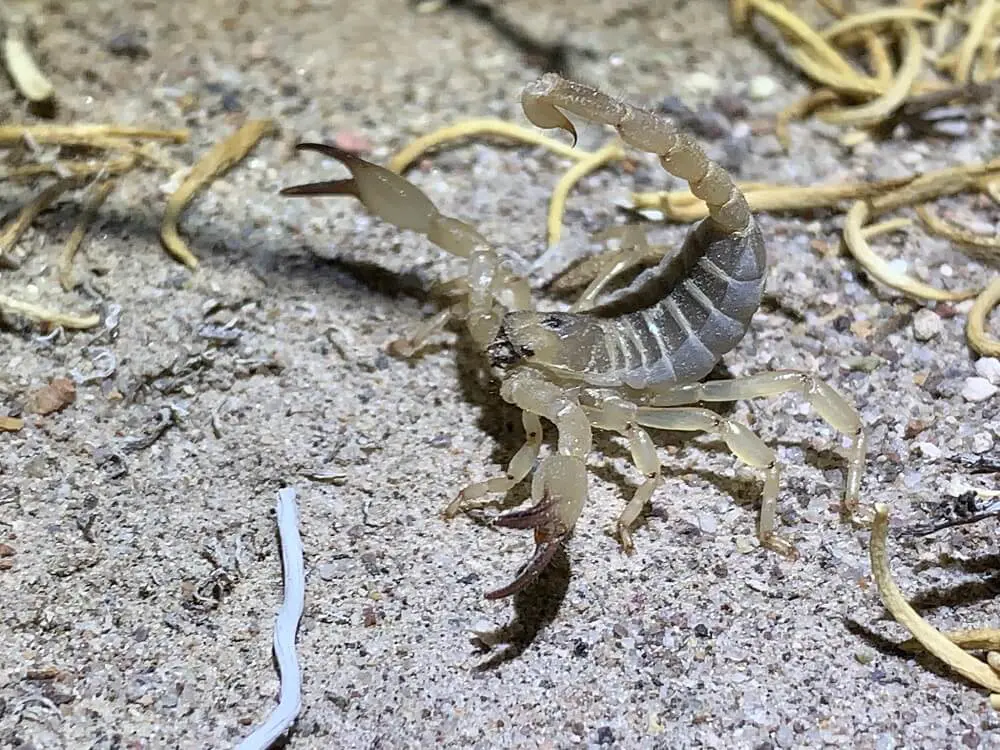
This burrowing scorpion prefers dry habitats with fine sand that has been soaked in rain and then dried by the sun, creating a clay, which is strong, but easy for this scorpion to dig into when creating and improving its burrow.
34. Paruroctonus luteolus
This scorpion, also known as the Golden Dwarf Sand Scorpion, belongs to the Vaejovidae family with most observations taking place during May.
They are nocturnal with tan-colored bodies that help them blend into their sandy habitat.
They have swollen pincers with bristly combs on their legs.
35. Kovarikia savaryi
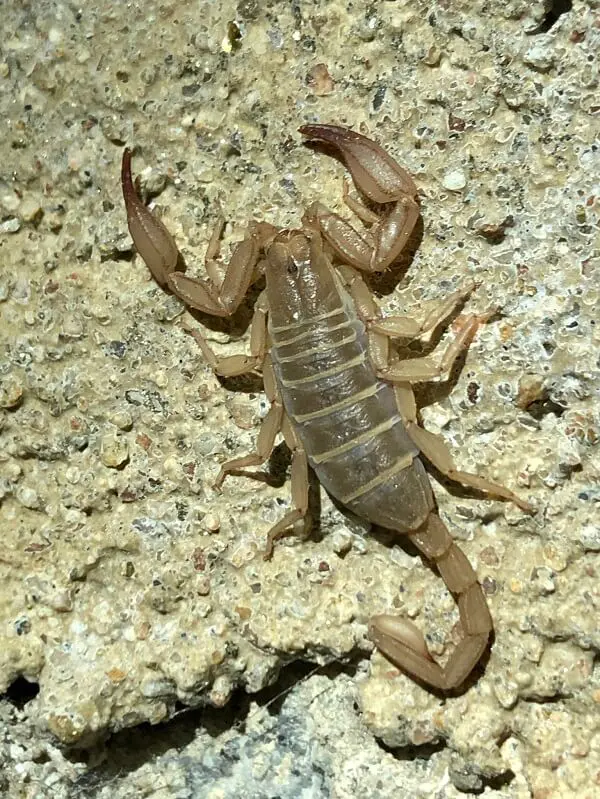
The Kovarikia savaryi is part of the Vaejovidae family can be found in the Santa Ana Mountains in Orange County.
Females are larger than males growing up to 5.7cm, with males growing up to 5cm.
36. Stahnkeus deserticola
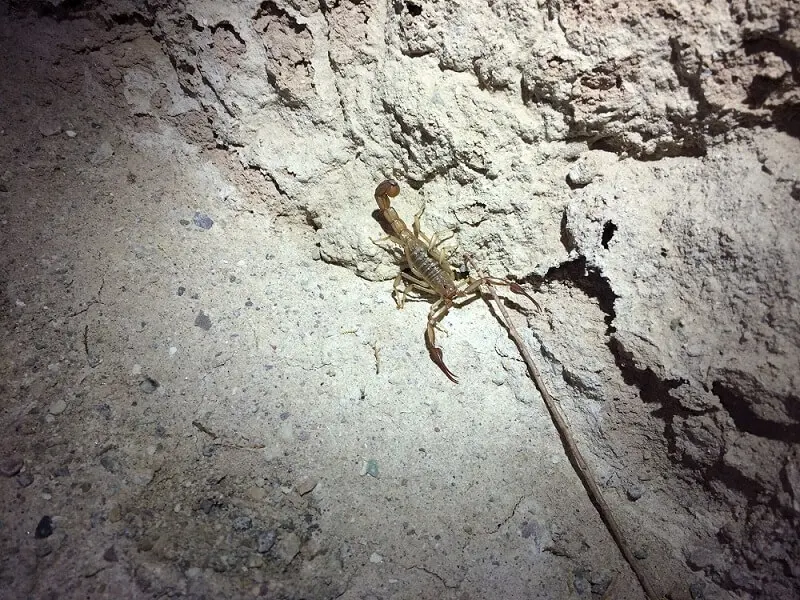
These are also part of the Vaejovidae family and can be observed in Inyo County, Death Valley with males growing to 4.2cm and females to 4.5cm.
37. Centruroides sculpturatus

Scientific name: Centruroides sculpturatus.
Common name: Arizona bark scorpion.
The Arizona bark scorpion is the most venomous scorpion in California with males growing to 8cm and females to 7cm.
They are nocturnal and adapted to desert regions. They spend their days hiding under rocks, tree bark, and wood piles.
They do not burrow like some of the other species. They are often seen in homes. They prefer areas which are high in humidity and moisture.
They prefer hanging upside down, which is why most stings happen when the scorpion is hidden under an object.
Their venom can cause pain, numbness, tingling, and vomiting in adults for up to 72 hours.
There have been two recorded fatalities, though more than one hundred thousand people are stung each year. It’s important to clean the sting side and apply a cool compress. Medical treatment should be sought for children.
38. Paruroctonus shulovi
This scorpion is part of the Vaejovidae family and can be found in the Inyo County of California with females growing to 3.8cm and males to 3.4cm.
39. Graemeloweus glimmei
The Graemeloweus glimmei is also a member of the Vaejovidae family and can be found in Napa, Mendocino, Colus, and more in California.
Males tend to be smaller than the female, growing to 3.4cm, while females can grow in excess of 4cm.
These scorpions are mostly observed in February and May.
40. Paruroctonus borregoensis
Scientific name: Paruroctonus borregoensis.
Common name: Borrego sand scorpion.
Paruroctonus arnaudi are part of the Vaejovidae family found in San Diego, San Bernadino and more in California. Males tend to be around 3cm, with females reaching 3.5cm.
41. Smeringurus aridus
This scorpion is also part of the Vaejovidae family and can be observed in the southwestern United States and is closely related to the Paruroctonus genus.
Further Reading: